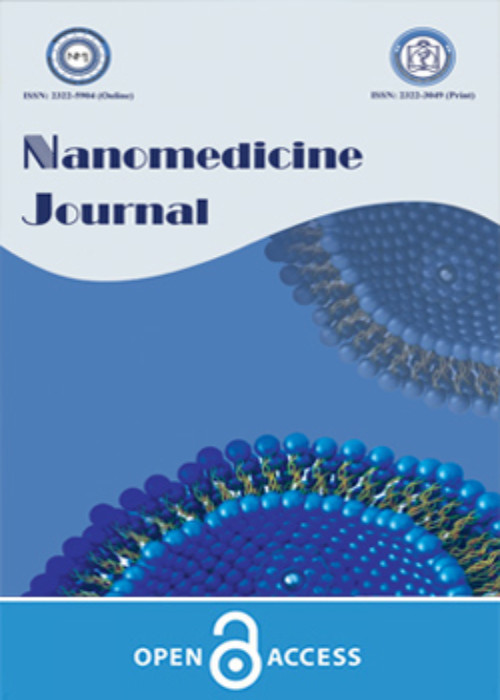Nanofibrillated chitosan/polycaprolactone bionanocomposite scaffold with improved tensile strength and cellular behavior
Author(s):
Article Type:
Research/Original Article (دارای رتبه معتبر)
Abstract:
Objective(s)
Fabrication of scaffolds with improved mechanical properties and favorable cellular compatibility is crucial for many tissue engineering applications. This study was aimed to improve mechanical and biological properties of polycaprolactone (PCL), which is a common biocompatible and biodegradable synthetic polymer in tissue engineering. Nanofibrillated chitosan (NC) was used as a natural nanofiller to produced PCL nanobiocomposite scaffold with both enhanced mechanical properties and appropriate biological properties.Materials And Methods
Surface morphology and orientation of chitosan nanofibrils was investigated via atomic force microscopy (AFM). PCL/NC suspension solutions with various content of NC were prepared using dimethylformamide as a dipolar solvent to obtain homogenous solutions. The scaffolds were produced through a solvent casting procedure at room temperature. The prepared scaffolds was characterized using scanning electron microscopy (SEM), attenuated total reflection- fourier transform infrared (ATR-IR) spectroscopy, X-Ray diffraction (XRD), uniaxial mechanical testing, contact angle (CA) measurements and swelling and weight loss analysis. In vitro studies were also exceeded to evaluate the cellular compatibility of the prepared scaffolds.Results
The average diameter of chitosan nanofibrils was measured 88±10 nm. The existence of NC in nanocomposite was proven by ATR-FTIR and XRD results. Interestingly, incorporation of 10% of NC into PCL, improved the tensile strength of scaffolds from 2.7 to 6.5 MPa while reduced the elasticity. What is more, water contact angel of the membranes was decreased from 133° to 88˚ which imply more surface wettability of nanocomposite scaffolds in comparison to PCL. Furthermore, the swelling ratio and weight loss rate of bionanocomposites were increased 30% and 2.5%, respectively. MTT biocompatibility assay and cell adhesion test demonstrated superior cellular behavior of the fibroblasts on nanocomposite scaffolds in comparison to pure PCL scaffold.Conclusion
The acquired results expressed that the PCL/NC bionanocomposite can be a reliable candidate for tissue engineering applications.Keywords:
Language:
English
Published:
Nanomedicine Journal, Volume:5 Issue: 2, Spring 2018
Pages:
77 to 89
magiran.com/p1816571
دانلود و مطالعه متن این مقاله با یکی از روشهای زیر امکان پذیر است:
اشتراک شخصی
با عضویت و پرداخت آنلاین حق اشتراک یکساله به مبلغ 1,390,000ريال میتوانید 70 عنوان مطلب دانلود کنید!
اشتراک سازمانی
به کتابخانه دانشگاه یا محل کار خود پیشنهاد کنید تا اشتراک سازمانی این پایگاه را برای دسترسی نامحدود همه کاربران به متن مطالب تهیه نمایند!
توجه!
- حق عضویت دریافتی صرف حمایت از نشریات عضو و نگهداری، تکمیل و توسعه مگیران میشود.
- پرداخت حق اشتراک و دانلود مقالات اجازه بازنشر آن در سایر رسانههای چاپی و دیجیتال را به کاربر نمیدهد.
In order to view content subscription is required
Personal subscription
Subscribe magiran.com for 70 € euros via PayPal and download 70 articles during a year.
Organization subscription
Please contact us to subscribe your university or library for unlimited access!


